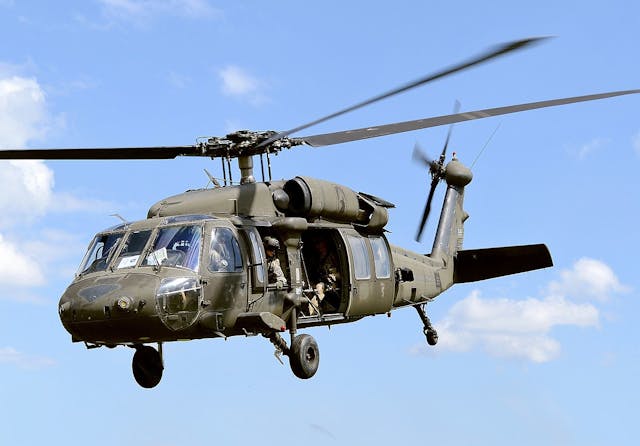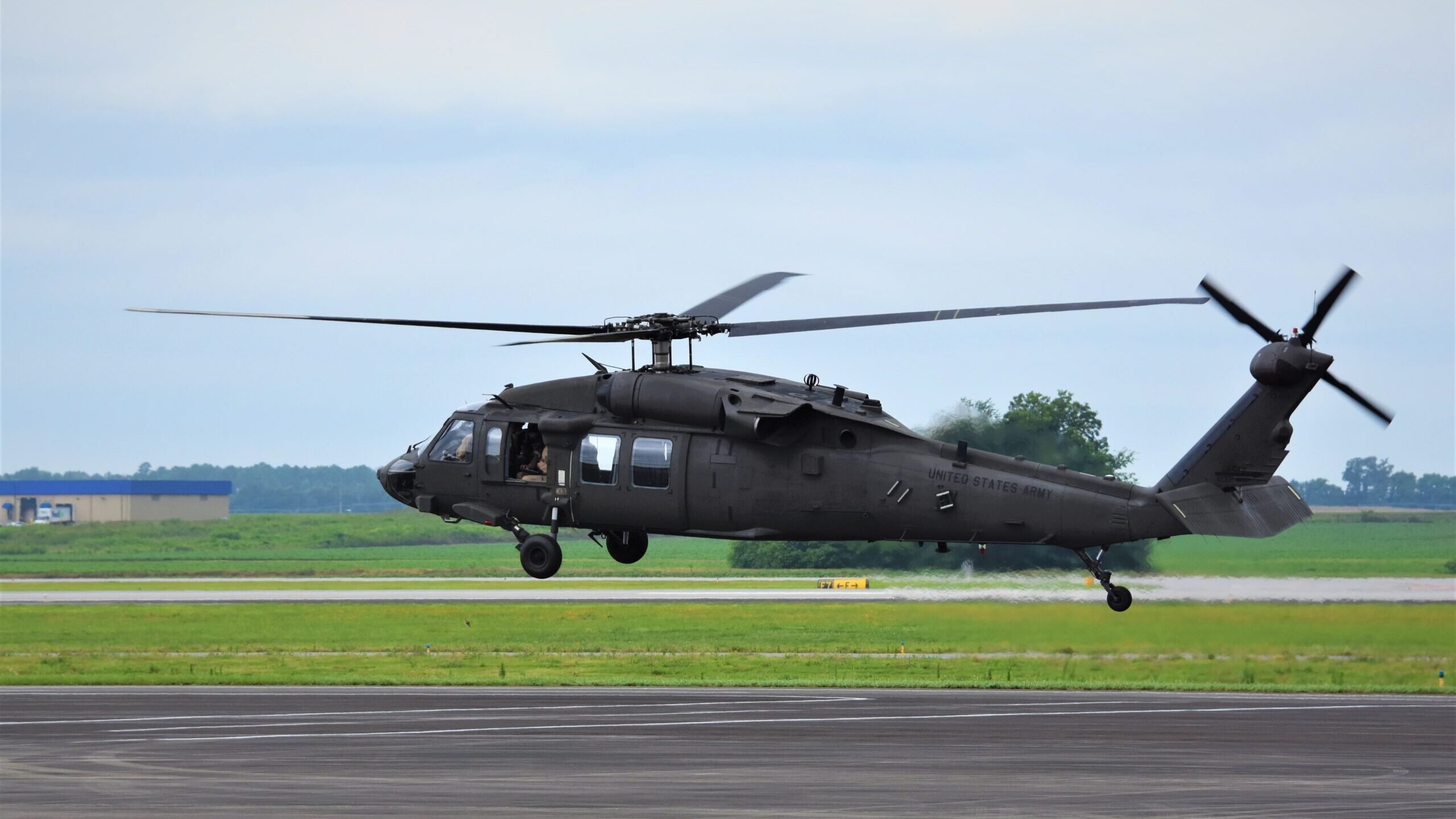UH 60 Helicopter Introduction: Every Little Thing You Required to Know
UH 60 Helicopter Introduction: Every Little Thing You Required to Know
Blog Article
Checking Out the Innovative Modern Technology Behind Airplane Style and Engineering
The field of aircraft layout and engineering is experiencing a transformative change driven by innovative modern technologies that boost efficiency, sustainability, and performance. As the industry grapples with the challenges of environmental duty, developments in lasting aviation modern technologies assure to reshape the future.
Advanced Products in Aircraft Design
How can the combination of advanced products revolutionize airplane layout? The consolidation of advanced materials, such as carbon fiber compounds, titanium alloys, and progressed porcelains, plays an important duty in enhancing aircraft performance and efficiency. These products offer premium strength-to-weight ratios, enabling suppliers to decrease general aircraft weight without compromising structural integrity. This reduction in weight directly contributes to improved fuel efficiency and raised payload capacity.
Furthermore, innovative materials display boosted resistance to corrosion and tiredness, causing lower maintenance prices and extended life span. The usage of titanium in important elements aids hold up against severe temperature levels and stress and anxieties, while carbon fiber compounds supply adaptability in style and manufacturing procedures. This versatility permits more aerodynamic shapes, adding to remarkable efficiency characteristics.
In addition, the assimilation of clever materials, which can change homes in reaction to external stimulations, opens new methods for adaptive systems in airplane design. uh 60. These technologies assure not only to enhance safety and security and functional performance yet likewise to contribute to sustainability initiatives by decreasing environmental effect through lowered exhausts. In summary, advanced products are redefining the landscape of aircraft design, paving the means for much more reliable, resilient, and eco-friendly aviation options
Aerodynamic Technologies for Effectiveness
Aerodynamic innovations play an essential duty in improving airplane efficiency, significantly affecting fuel intake and general efficiency. Developments in airfoil design, such as the introduction of supercritical wings, permit enhanced lift-to-drag ratios, decreasing drag at transonic speeds. These innovations make it possible for airplane to keep higher speeds with reduced gas expense, straight influencing functional expenses and ecological sustainability.
Moreover, the combination of winglets has verified reliable in alleviating vortex-induced drag at the tips of wings, additionally boosting gas effectiveness - uh 60. This style modification causes a reduction in wake disturbance, contributing to boosted aerodynamic efficiency throughout cruise problems

In addition, computational liquid dynamics (CFD) devices have revolutionized the screening and improvement of wind resistant forms, permitting for specific simulations of air movement around airplane (uh 60). This makes it possible for designers to introduce constantly, ensuring that modern-day aircraft not only satisfy regulatory criteria yet also press the borders of performance in aeronautics

Role of Computer System Simulations
Computer simulations have come to be a crucial tool in the field of airplane design, making it possible for designers to conduct in-depth evaluations and optimizations of various style facets. These simulations permit the virtual testing of wind resistant homes, structural stability, and performance metrics long prior to physical prototypes are constructed. By employing computational liquid characteristics (CFD) and limited element evaluation (FEA), engineers can predict just how air flows around the aircraft and just how various materials will reply to stress and anxiety and stress.
In addition, computer simulations help with the expedition of a broad array of variables and situations, increasing the design process and lowering costs associated with physical screening. This capacity not only improves the accuracy of predictions relating to visit their website airplane habits but likewise provides insights into prospective layout improvements that could not be quickly apparent through typical approaches.

Furthermore, simulations assist make sure conformity with rigorous safety and security laws by permitting designers to recognize and remedy possible problems early in the style phase. The combination of simulation innovations right into the aircraft design process highlights the significant developments in engineering practices, ultimately contributing to the development of more secure, a lot more effective, and eco-friendly aircraft.
Artificial Knowledge in Design
Expert system (AI) is changing the engineering landscape, especially in airplane design, by optimizing and improving decision-making procedures layout workflows. Through maker knowing algorithms, AI can assess huge datasets, discovering patterns and understandings that check this site out notify style selections and improve overall effectiveness.
AI applications in aircraft style consist of generative layout, where algorithms produce several layout alternatives based on defined criteria, allowing engineers to review a broader variety of possibilities. This not just accelerates the layout check phase yet also guarantees that the end products fulfill rigorous efficiency and safety and security standards.
Moreover, AI-driven predictive analytics facilitate maintenance organizing by analyzing historic information and forecasting possible failings. This aggressive strategy lowers downtime and improves aircraft reliability.
In addition, AI aids in simulation and modeling, making it possible for engineers to test layouts under various problems without the demand for physical models. This capability shortens growth timelines and minimizes expenses related to standard testing methods.
Lasting Air Travel Technologies
Exactly how can the aviation industry properly equilibrium growth and ecological duty? The response hinges on the fostering of sustainable air travel modern technologies that prioritize performance and decrease carbon discharges. Developments such as sustainable aeronautics gas (SAFs), which are originated from eco-friendly sources, have become a critical part in attaining lower lifecycle exhausts. SAFs can significantly reduce the carbon impact of flights, making them a practical choice to standard jet fuels.
In addition, advancements in aircraft design, such as the advancement of lighter products and more aerodynamically effective shapes, contribute to enhanced gas performance. Electric and hybrid propulsion systems are additionally obtaining grip, offering a path to reduce reliance on fossil fuels and minimize greenhouse gas emissions.
The assimilation of these technologies is supported by governing frameworks and market cooperations targeted at establishing enthusiastic sustainability targets. Additionally, electronic devices like information analytics and artificial intelligence can enhance trip operations, better enhancing fuel effectiveness. By accepting lasting methods and modern technologies, the air travel industry can not only satisfy the growing need for air traveling yet additionally play a critical function in dealing with environment adjustment, making sure an extra sustainable future for air transportation.
Final Thought
The convergence of sophisticated materials, aerodynamic developments, and innovative innovations marks a considerable development in aircraft style and engineering. The integration of carbon fiber composites, titanium alloys, and AI-driven processes not just boosts efficiency and performance however likewise enhances process and predictive maintenance. Furthermore, the ongoing growth of lasting air travel innovations highlights a commitment to ecological duty, leading the way for a greener future in aviation. This constant innovation will certainly form the industry's trajectory for several years ahead.

Computer simulations have ended up being an important device in the area of airplane design, allowing designers to carry out thorough evaluations and optimizations of various style facets.The merging of sophisticated products, wind resistant technologies, and cutting-edge technologies marks a considerable evolution in aircraft design and design.
Report this page